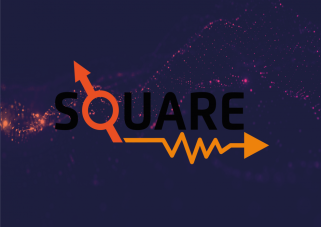
Squeezed light for gravitational wave detection
Squeezed light, a peculiar quantum tool, is used in some of the largest machines on earth: gravitational wave detectors.
When you think about Quantum Technologies, you might imagine very small devices, as quantum physics becomes important in the realm of the nano-world. However, a peculiar quantum tool, so called ‘squeezed light’ is used in some of the largest machines on earth: gravitational wave detectors.
Gravitational waves were detected for the first time on September 14, 2015 by the LIGO Observatory. Not only did this create a large media hype all over the world, it also won the Nobel Prize in Physics 2017. Besides the two LIGO detectors in the USA, there is also in operation the Virgo detector in northern Italy and the GEO600 detector in Germany, which all work closely together in a global network. The devices are giant optical interferometers that measure tiny changes in the length of their arms. They are so sensitive, that they can detect a length change of a thousandth of the diameter of a proton due to the passing of a gravitational wave.
Gravitational wave detectors can further increase their enormous sensitivity if they use squeezed light. According to Heisenberg’s uncertainty principle, the amplitude and phase of a light wave cannot be measured with unlimited precision at the same time. In normal light, e.g. from a laser, the uncertainty is equally distributed between amplitude and phase. The noise in amplitude is proportional to the square root of the laser power, higher light power thus increases the signal-to-noise ratio. For this reason, LIGO is operated with very powerful lasers, but in practice, the maximum light power that can be deployed is limited by heating of the mirrors and other effects.
Using squeezed light, the uncertainty can be shifted: the noise in amplitude can be reduced (‘squeezed’) with the cost of increasing the phase noise (which in this case is not of interest to the experiment). A deeper analysis shows that the photons in squeezed light are entangled. They no longer travel completely independently, but they “know” to a certain extent about the properties of other photons in the beam. Squeezed light is generated using special non-linear crystals, that change the way they transmit a light beam with the intensity of the beam, placed inside an optical resonator (two opposing mirrors).
GEO600, which has been developing technology for LIGO for decades, already uses squeezed light since 2010 and LIGO and Virgo are currently updated with this technology. ‘Squeezing’ is a general technique in quantum technologies that can be applied not only to light, but to many systems, e.g. ensembles of cold, trapped atoms for atomic clocks or quantum sensors.



